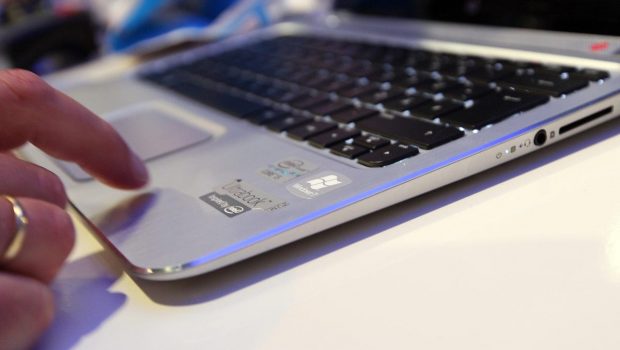How Connected Technologies Can Help The World Decarbonise
https://www.ispeech.org/text.to.speech
BERLIN, GERMANY - AUGUST 31: A visitor tries out an HP Spectre XT laptop computer featuring an ... [+]
When it comes to tackling the climate crisis, the chances are that the Internet-of-Things (IoT) and cloud-based technology is not top of everyone’s agenda.
Truth be told, they might not even be third or fourth, but connected technologies are playing an increasing role in our lives, and in ways that many of us may not realise.
And crucially, they can play a leading role in improving air quality and helping organisations and cities decarbonise.
A report by WSP found that carbon emissions associated with IT can be reduced by as much as 98% by moving to public cloud.
But Cycloid CEO Benjamin Brial said the majority of businesses are still using legacy assets, which means they utilise servers inefficiently and need massive amounts of cooling.
He said this puts huge demands on energy usage. Instead, they could switch to cloud service providers, which are often hosted in data centres, that are often optimized to use renewable energy.
But Brial added while public cloud companies often provide their own cloud consumption carbon footprint info, it doesn’t show the full picture.
In terms of Cycloid, Brial said it has tried to use to a conservative approach to energy consumption – aka GreenOps - across all parts of the business.
This means Cycloid has been fully remote since its foundation in 2015, and as of this month, has implemented a four-day week which will help reduce its carbon footprint further.
Secondly, it has made a conscious decision to use EU-based data centres that are close.
“Net-zero is often seen as a long-term target, but the effects of climate change are all around us and our industry needs to act now,” said Brial.
He added the principles of GreenOps provide a framework for organisations to start understanding and quantifying the environmental impacts of their IT strategies.
At the same time, he said they help promote a culture of environmental responsibility which flows through every department in an organisation.
Jason Murphy, the managing director of Global Retail at IMS-Evolve said he first became aware of how IoT software could optimise usage and reduce energy consumption a decade ago.
Murphy said using an IoT platform can help standardise data from a variety of different sources and provide a single mechanism to optimise assets across an entire organisation.
In the case of IMS-Evolve, he said it has developed algorithms to help the company examine data from all the refrigeration, ventilation, and lighting systems to ensure stores are run as efficiently as possible.
This can include spotting potential issues with refrigeration units, which could be drawing more power than they should or failing to keep food at the correct temperature.
“When you think of the hundreds of store colleagues who could be involved, you’ve got to simplify and automate any process,” said Murphy.
“Retail is a really competitive, quite-closed environment and you have to push through to get better value, but once you do, the outcomes are huge.”
Spanish IoT specialists Libelium, which recently published a white paper on the challenges faced by digitally transformed municipalities and the next steps local authorities can take to realise the potential of IoT applications.
Libelium CEO and founder Alicia Asin said it was important to identify the right technology and look at how it can improve the quality of life of the people living in cities.
For example, she quoted the example of smart parking systems, which can citizens find empty spots quickly and reduce emissions from cars waiting for a bay to become available.
Asin said smart city systems are also play an important role in monitoring air and noise pollution.
In most cities, decisions on how to reduce traffic congestion and pollution are based on professional weather stations that are very expensive and sometimes located even outside the city, she explained.
She said with smart city systems, you can get low-cost air quality stations throughout a city and see where the pollution problems are coming from.
Artificial intelligence can also show current pollution levels in a city, and forecast how this pollution is going to evolve, depending on the weather, traffic and other data sources, according to Asia.
She added it is not just a question of when the IoT becomes a part of everyday life, because it will happen, but rather how decision-makers make the most of it.
“Data-cracy can give us a better democracy because it will help cities to have a different conversation with it citizens. Will we be able to live with so much transparency in our cities? I hope so,” she said.








Gloss